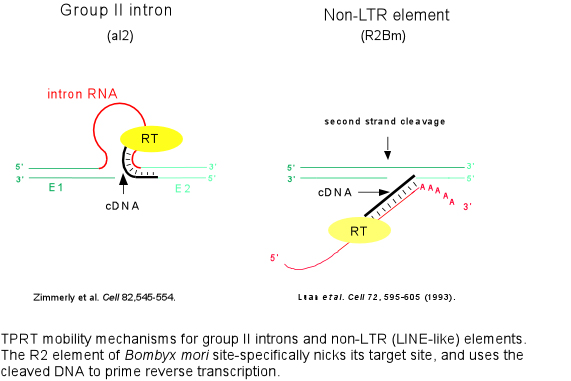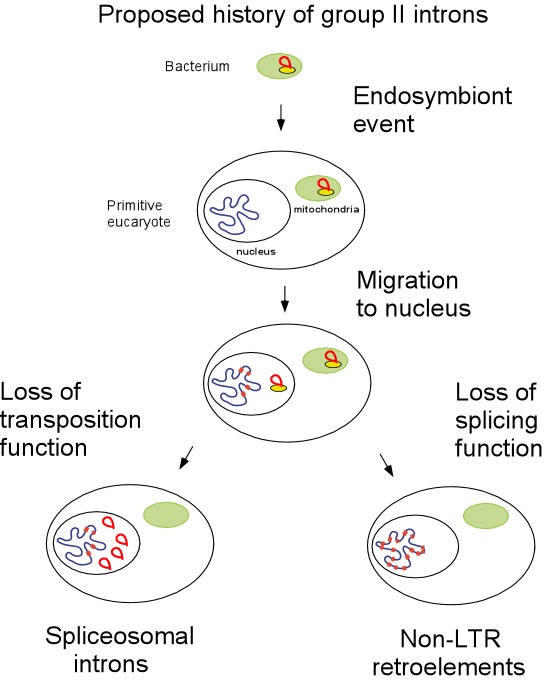Evolutionary connections to spliceosomal introns and non-LTR retroelements
Although it remains unproven, group II introns are widely accepted to be the ancestors of spliceosomal introns found in higher eukaryotes, including humans. The idea is supported by a common splicing mechanism, and by structural similarities between group II introns and the snRNA/intron/exon pairings that form in the spliceosome during the splicing reaction.
Group II introns are also related to non-LTR retroelements, a prominent class of nuclear retroelements. The best known non-LTR elements are LINE elements, that make up roughly 20% of the human genome. In fact, the RTs of non-LTR elements are fairly closely related phylogenetically to group II introns. Further, the mobility mechanisms of both elements are known as target-primed reverse transcription (TPRT). (Zimmerly et al, 2001)
As group II introns are already considered to have been the ancestors of spliceosomal introns, it follows that they would have been present in nuclear genomes of the earliest eukaryotes. Thus, it has been proposed that group II introns were the ancestors of non-LTR elements, as well as spliceosomal introns.

Because group II introns are considered the ancestors of spliceosomal introns, it is likely that they would have been present in nuclear genomes of the earliest eukaryotes. Therefore, it has been proposed that group II introns might also be ancestors of non-LTR elements (LINE-like elements).
